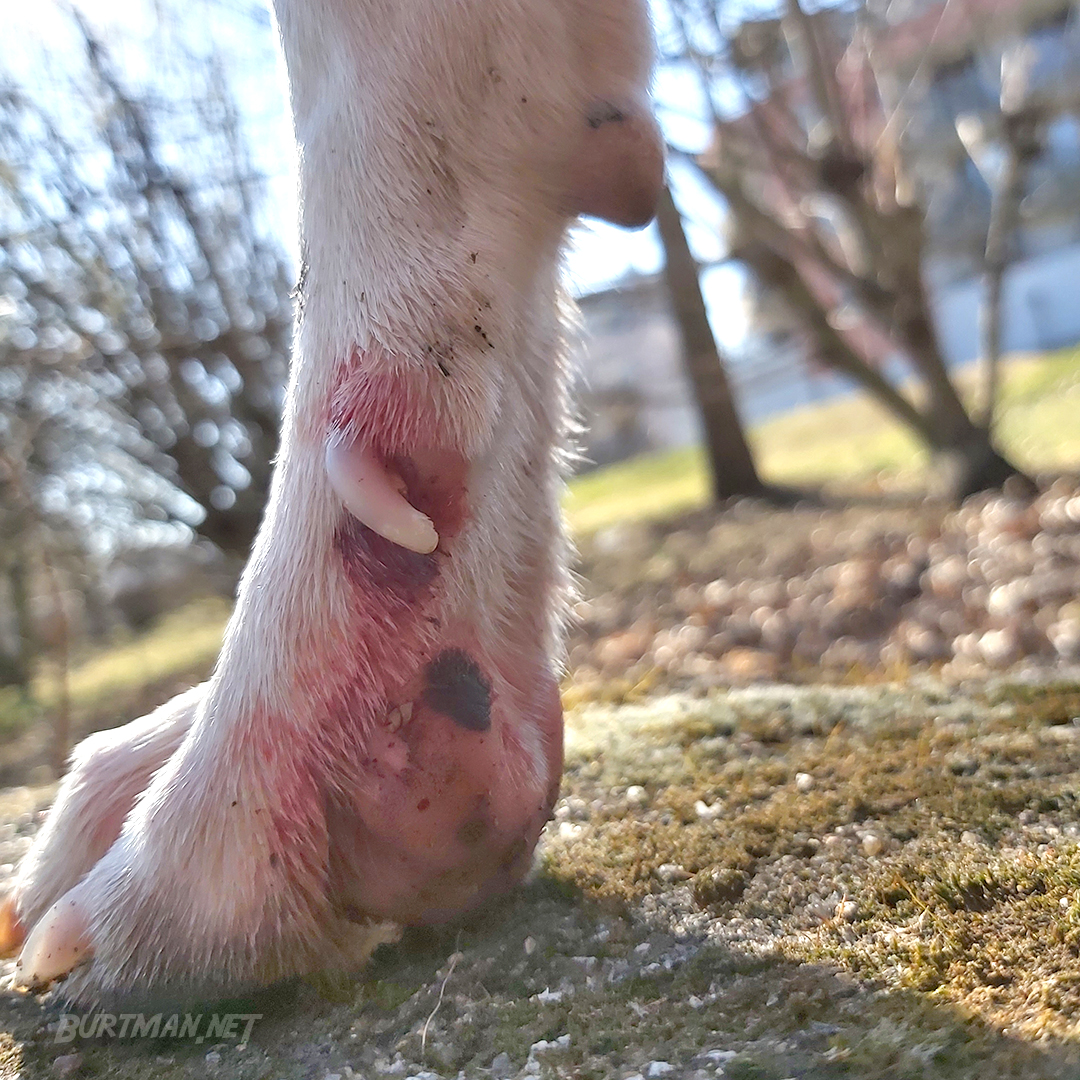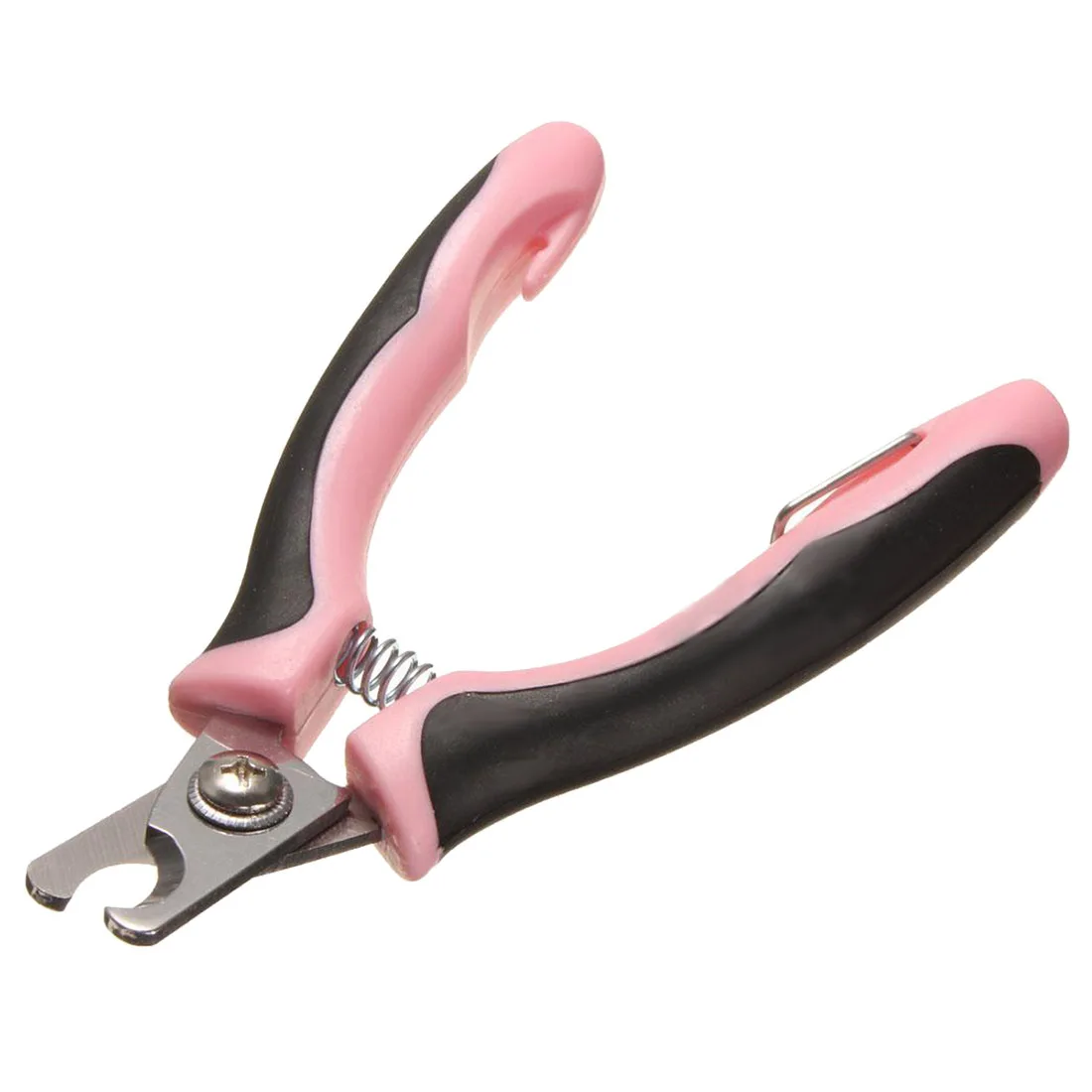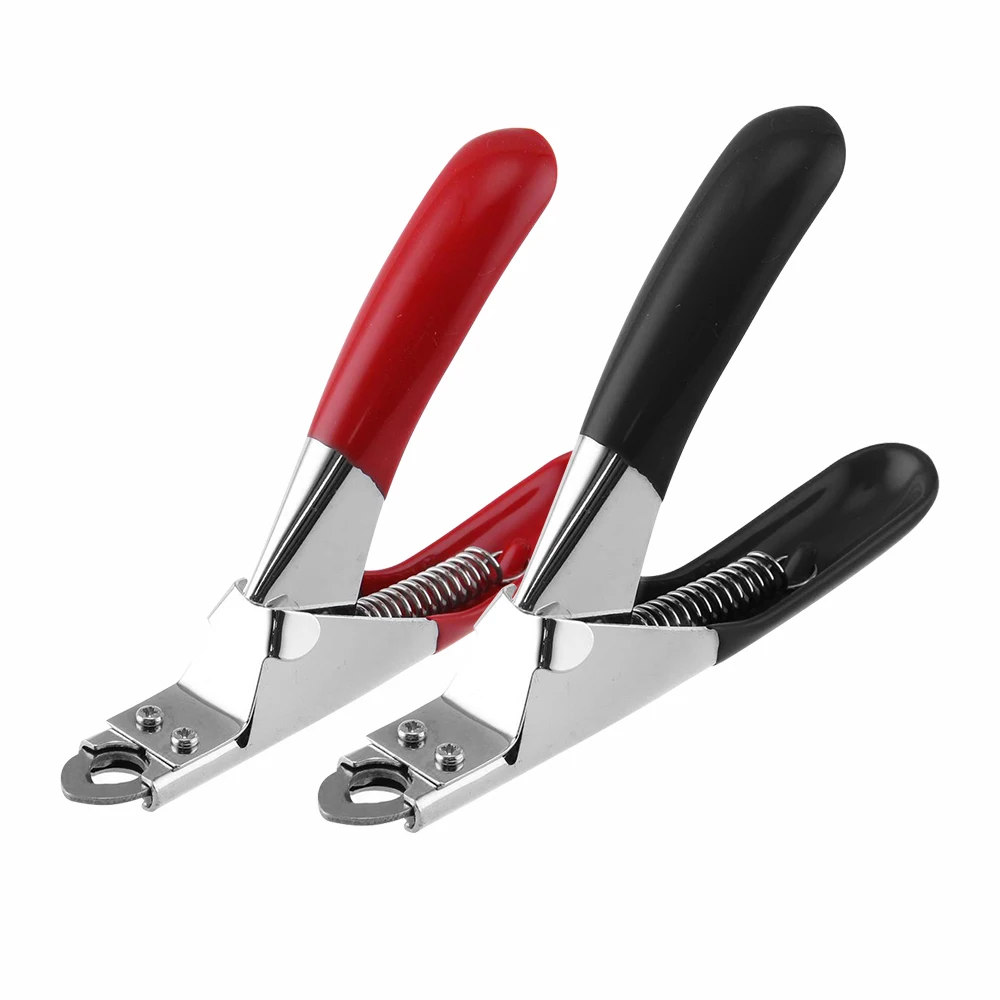Broken Claws - A Hazard Of Lazy Clipping
Updated:
Youtube: googlevideo.com, youtube-nocookie.com.
If your dog is anything like me, claw trims are not his favorite and he'll deploy any number of games to get out of clipping time. For the first few months, I struggled with clipping and made life hell for dad, every time I saw the clippers. He didn't worry too much, as we walk a lot, and he probably thought that my claws would stay short because of that.
To a point, they did, but that point came and went when I was running and jumping along a stream and landed on a manhole cover (what was that doing there?!) One of my 'thumb' claws, which I hadn't let dad trim, must have landed awkwardly on the solid surface and broken. Being a tough pup, I didn't make a fuss or start limping, so dad probably didn't notice anything at first, but when he came over to give me a quick rub, he spotted blood on my paw. The claw was broken very high up, just under the flesh, so he couldn't see any safe way to remove the damaged part.

The claw broke inside my paw.
The vet didn't seem at all worried, and to our surprise, he just snipped the entire claw off at the root, nerve and all. Neither dad nor I thought this was anything less than a horrific solution and I shrieked and jumped down from the vet's examination table to cower in the corner. But as soon as we left the vet's office, I forgot about it, began walking as normal and even tried digging a few holes, which dad had to put an end to. The wound healed pretty cleanly, although the claw is now permanently off to one side and a bit curlier than on the opposite one.
I definitely don't suggest you should randomly lop off any broken claws (or other wounded body parts) - that's definitely a job (and a decision) for the vet. All I'm saying is that claw clipping is a necessary part of having a dog in your life, and whether or not you clip claws should not be decided by your dog (because we will always decide no).
Getting Past The Struggle
At one point, my anti-clipping campaign became such a drama that I actually made a hole in the bathroom door, trying to smash my way through it, in order to avoid five seconds of moderate displeasure. This is about training and it needs to start on day one. Dad learned that on day 60.
Although he'd fostered dogs in the past, I'm the first dog he's lived with for more than a month or two, and he probably wasn't as equipped in the training department as he had thought. We pretty much trained each other, especially on what I should and should not be allowed to get away with.
After watching videos, reading articles and talking to other dog people, dad found a few suggestions that seemed promising...
1. Over the course of several days, or even weeks (depending on the fear level), you can place the nail clippers near your dog and reward him every time he doesn't react. It works, but you need to be consistent and very patient. Plus you need to have millions of treats on standby, so make sure they're healthy to eat in quantity (research it - even healthy vegetables can be toxic for us dogs, if we eat too much of them).
2. Use a nail file to gently file the claws instead of clipping them. Some dogs, myself included, actually enjoy this. But, if you haven't kept the claws short, this will take a pretty long time and it's unlikely your pooch is going to sit through it for long periods.
3. Have your dog sit, give him a treat, have him give you his paw, give him a treat, show him the clippers, treat, clip one claw, treat. If you can do one paw a day, you'll easily stay on top of it, plus it can create a more trusting relationship around nail clippers and even lead to nail clipping becoming a source of fun.
You need to enable javascript from Youtube (and possibly others), in order to see this video.
Well clipped claws are important because long claws can break, as we've seen, possibly leading to infection that can be serious. But that's not all; when claws get too long, they can cause discomfort and even pain during walking, and can, in extreme examples, can lead to permanent foot deformity and bone problems (walking abnormally for long periods can damage joints).
If you let your dog's claws get too long, the nerves inside will also grow longer, preventing you from being able to safely clip them back to their previous length. Through careful clipping, over a period of time, the nerve can eventually be persuaded to retract, but this is much harder than keeping the claws short in the first place.
Different Clippers
You will see a few different types of nail trimmers. In my opinion, the easiest to use are also the safest, and the ones that cause the least problems for me are the ones that look like dad's wire cutters. Not too much of a curl on the blade and definitely no fancy mechanism. The type that require you to put the claw into a circle are asking for frustration (and possibly injury). Avoid them unless you already have good results with them.

This simple type works best for most dogs.

This complicated type can be difficult, and that can lead to injury or avoidance issues.
As always, a vet is your best bet for advice, especially if your dog is making it difficult to clip claws. They often have good experiences with certain methods that they will be happy to tell you about and may be willing to demonstrate. If your vet can't help you, they're not a real vet.
Public Comments
Posted by Burtman on
September 28 2024, 02:56 pm.

Posted by Laila on
September 27 2024, 08:19 pm.
Good advice.
I clip my small dog every 3 weeks with the clippers in the sevond picture, black and red, mine have a light in them too to help see the live vein.




 Byron's Dog Blog
Byron's Dog Blog Read around 900 times
Read around 900 times For Everyone
For Everyone
Thanks, Sue. I've since discovered that Byron likes his pedicure sessions, as long as he feels in control. If I take his paw, it's not going to be fun. If I ask for it and he gives it freely, he'll sit through all 18 claws, clipping and filing, like a little prince being pampered. :) Dog psychology sure is amusing at times.